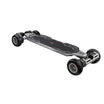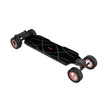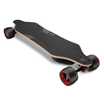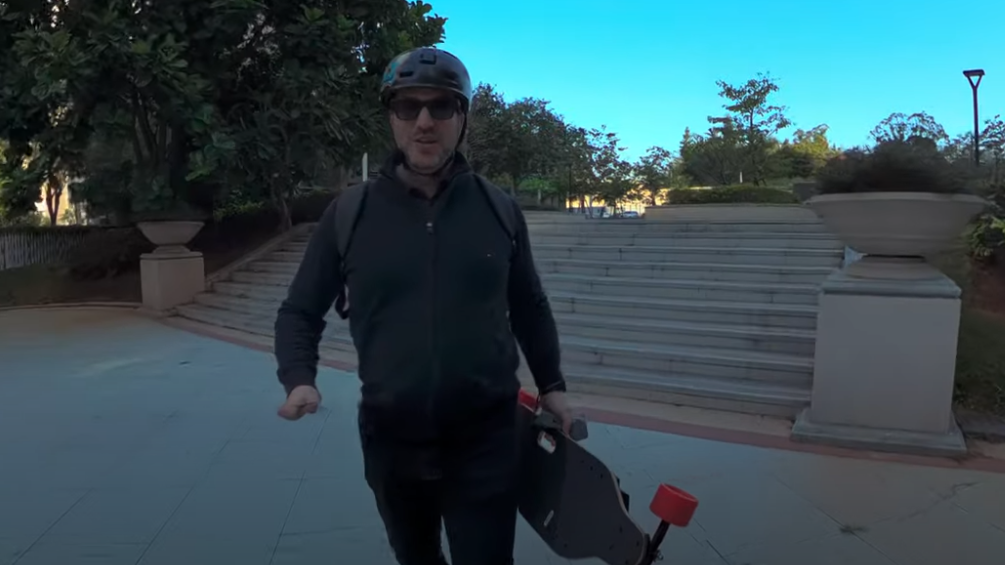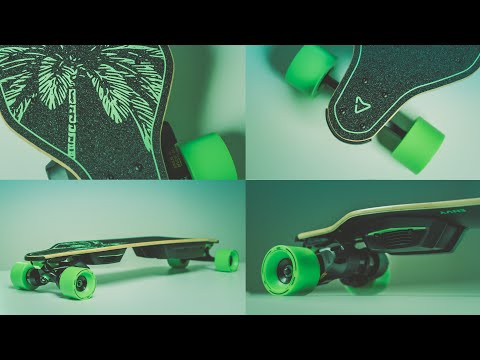Key Takeaways:
- You can choose a longboard (33 to 60 inches) for safety and cruising or a shortboard (28 to 32 inches) for speed and tricks.
- From affordable maple to premium carbon fiber deck material options, Your choice of material affects durability, weight, and ride feel.
- Whether you're traveling, carving, or doing tricks, the deck you choose should depend on your intended use.
- Even though high-end materials like carbon fiber cost more at first, they often end up being cheaper in the long run for their performance and durability.
- For a successful DIY build, think about things like the room for electronics, the length of the wheelbase, and the level of flexibility.
When building your own electric skateboard, you may have difficulty choosing the deck. The right deck can greatly affect your riding experience. It also plays a big role in your stability and overall performance. This blog below will look at various deck options, materials, and features to help you make an informed choice for your DIY electric skateboard.

What Types of Decks Are Available for Electric Skateboards?
There are a few different e-skateboard deck options for you to choose from. Each type has its own traits that make it good for different riding styles and tastes.
Deck Lengths: Longboards vs. Shortboards
In general, longboards are 33 to 60 inches long. They're very stable and ride smoothly, so they're great for cruising and commuting. A longboard is a good choice if you enjoy long rides.
Most shortboards are between 28 and 32 inches long. They're easier to move around, which makes them great for tricks and tight turns. A shortboard might be better for you if you like to do tricks or need to move quickly.
| Feature | Longboard (33-60") | Shortboard (28-32") |
| Length Range | 33-60 inches | 28-32 inches |
| Best For |
- Cruising - Commuting - Long rides |
- Tricks - Tight turns - Quick maneuvers |
| Stability | High | Moderate |
| Maneuverability | Moderate | High |
Deck Shapes: Concave vs. Flat vs. Convex
The shape of the deck is also important for your riding experience. Here are some common shapes:
| Deck Shape | Characteristics | Best For |
| Concave | Curves inward |
- Better grip - Enhanced control - Secure turning |
| Flat | No curve |
- Stable riding - Beginner-friendly - Simple cruising |
| Convex | Curves outward |
- Unique riding feel - Experimental riders - Alternative style |
What Materials Should You Consider for Your Electric Skateboard Deck?
Besides the length and shape of the deck, the material can also affect the electric skateboard's durability, weight, flexibility, and overall performance. You can often find the following motorized skateboard deck materials:

| Material | Key Characteristics | Best For | Pros | Cons | Price Range |
| Maple Wood | Durable, rigid, good shock absorption |
- Trick riding - Heavy riders - High impact use |
- Excellent durability - High load capacity - Good responsiveness |
- Heavier weight - Less flexible - Limited flex |
$$ |
| Bamboo | Flexible, lightweight, springy |
- Commuting - Carving - Smooth riding |
- Lightweight - Great shock absorption - Eco-friendly |
- Lower durability - Less load capacity |
$$ |
| Fiberglass | Strong, lightweight reinforcement |
- Hybrid builds - Reinforcement layer |
- Adds strength - Minimal weight gain |
- Higher cost - Needs combination |
$$$ |
| Carbon Fiber | Ultra-light, extremely rigid |
- Speed riding - Performance builds |
- Maximum durability - Minimal weight |
- Most expensive - Very stiff ride |
$$$$ |
| Composite | Customizable performance |
- All-around use - Specific needs |
- Balanced properties - Custom performance |
- Variable quality - Complex construction |
$$$-$$$$ |
(Price Range Key: $ = Budget, $$ = Mid-range, $$$ = Premium, $$$$ = High-end)
Key Takeaways for Deck Material Selection
- For beginners and casual riders, maple or bamboo decks offer the best value-to-performance ratio. For learning, maple is more durable, while bamboo makes the ride feel more forgiving.
- If you want to move fast, you might want to start with a fiberglass-reinforced deck. It makes a good balance between speed and durability, and it doesn't cost as much as full carbon fiber.
- Premium composites and carbon fiber are more expensive, but they often pay for themselves in the long run because they last longer and work better. They're best for skilled riders who can get the most out of their benefits.
Extra Factors to Consider When Choosing an Electric Skateboard Deck
When selecting a deck for your electric skateboard build, several features should be taken into account:
Your Riding Style
Different riding styles require specific deck characteristics to optimize performance. Here's how riding styles influence deck selection:
| Riding Style | Recommended Deck Features | Best For |
| Commuting | Lightweight, flexible deck | Urban transport, portability |
| Carving | Flexible deck with good rebound | Smooth turns, surf-like experience |
| Downhill | Stiff deck | High-speed stability |
| Freestyle | Lightweight deck with kicktail | Tricks and stunts |
| Long-Distance | Longer deck with flex | Comfort during extended rides |
Deck Length and Width
The size of the deck affects how stable and comfortable it is. A longer deck is usually more stable at high speeds, but it might be harder to turn. On the other hand, a shorter deck lets you make quick turns but may feel less sturdy.

Mounting Function
Where will you attach your electronics? Look for a deck that has:
- Enough space under the deck for batteries
- Flat areas to mount your electronic parts
- Room for wire routing
- Strong mounting points for enclosures
Wheelbase Length
This is the distance between your front and back trucks. A longer wheelbase:
- Makes your board more stable
- Works better for high speeds
- Gives you a smoother ride
A shorter wheelbase:
- Makes turning easier
- Helps with tight spaces
- Works better for tricks
Flexibility
A deck that is more flexible can better handle shocks, but it might feel unsteady at high speeds. A stiffer deck is more stable, but it can transmit vibrations from rough terrain.
Ensuring Your Deck Meets Your Performance Needs
To ensure your chosen deck meets your performance needs, here is some extra advice you should take into consideration:
- Evaluate the Terrain. If you're going to be riding on rough or uneven ground, choose a deck that is flexible and can handle shocks well.
- Think about weight and portability. If you have to take your board around a lot, like upstairs, choose a material that is lighter, like carbon fiber or bamboo.
- Set Your Budget. Keep in mind that carbon fiber decks will cost a lot more due to their more advanced properties. Maple decks are usually more affordable.
Creating Your Dream Electric Skateboard Deck
There's no "perfect" deck for everyone. What matters is finding one that matches your style and needs. Think about what you want. From the deck's size and shape to what it's made of, you've got all the info to make a smart choice. Take your time, do your research, and pick a deck that makes you excited to ride. So, what are you waiting for? Get out there and start building your dream electric skateboard!














